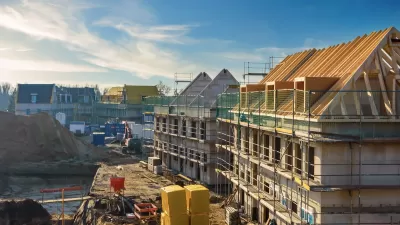In his new book, Arrival City, Doug Saunder explores how cities can ease the planet's "final migration" by creating "arrival" neighborhoods that allow newcomers to make connections with each other, their home villages and especially their new cities.
Saunders shows how one neighborhood in Toronto exemplifies how to make an Arrival City work: Thorncliffe Park may have a high poverty rate, but, much like slums in elsewhere in the world it is providing newcomers with the opportunity to earn livelihoods and enter the mainstream of their adopted countries.
"[Toronto's Thorncliffe Park] is a culture of transition – a culture both entrepreneurial and conservative that can be found on the edges of cities around the world, in the slums of Dhaka and Sao Paulo and in the migrant neighbourhoods on the outskirts of Paris and Amsterdam. The ex-villagers here have an amazingly consistent record of entering the middle-class, urban mainstream within a generation. They launch small shops and other businesses and send their children into postsecondary education.
The area's poverty is not a sign of failure: It means that Thorncliffe Park, like many such neighbourhoods, is functioning as a highly successful engine of economic and social integration, churning people out as fast as it takes them in, constantly renewing itself with fresh arrivals."
FULL STORY: How Slums can Save the World

Americans May Be Stuck — But Why?
Americans are moving a lot less than they once did, and that is a problem. While Yoni Applebaum, in his highly-publicized article Stuck, gets the reasons badly wrong, it's still important to ask: why are we moving so much less than before?

Using Old Oil and Gas Wells for Green Energy Storage
Penn State researchers have found that repurposing abandoned oil and gas wells for geothermal-assisted compressed-air energy storage can boost efficiency, reduce environmental risks, and support clean energy and job transitions.

Placekeeping: Setting a New Precedent for City Planners
How a preservation-based approach to redevelopment and urban design can prevent displacement and honor legacy communities.

San Francisco’s Muni Ridership Grew in 2024
The system saw its highest ridership since before the Covid-19 pandemic, but faces a severe budget shortage in the coming year.

Colorado Lawmakers Move to Protect BRT Funding
In the face of potential federal funding cuts, CDOT leaders reasserted their commitment to planned bus rapid transit projects.

Safe Streets Funding in Jeopardy
The Trump administration is specifically targeting bike infrastructure and other road safety projects in its funding cuts.
Urban Design for Planners 1: Software Tools
This six-course series explores essential urban design concepts using open source software and equips planners with the tools they need to participate fully in the urban design process.
Planning for Universal Design
Learn the tools for implementing Universal Design in planning regulations.
Heyer Gruel & Associates PA
City of Moreno Valley
Institute for Housing and Urban Development Studies (IHS)
City of Grandview
Harvard GSD Executive Education
Salt Lake City
NYU Wagner Graduate School of Public Service
City of Cambridge, Maryland





























